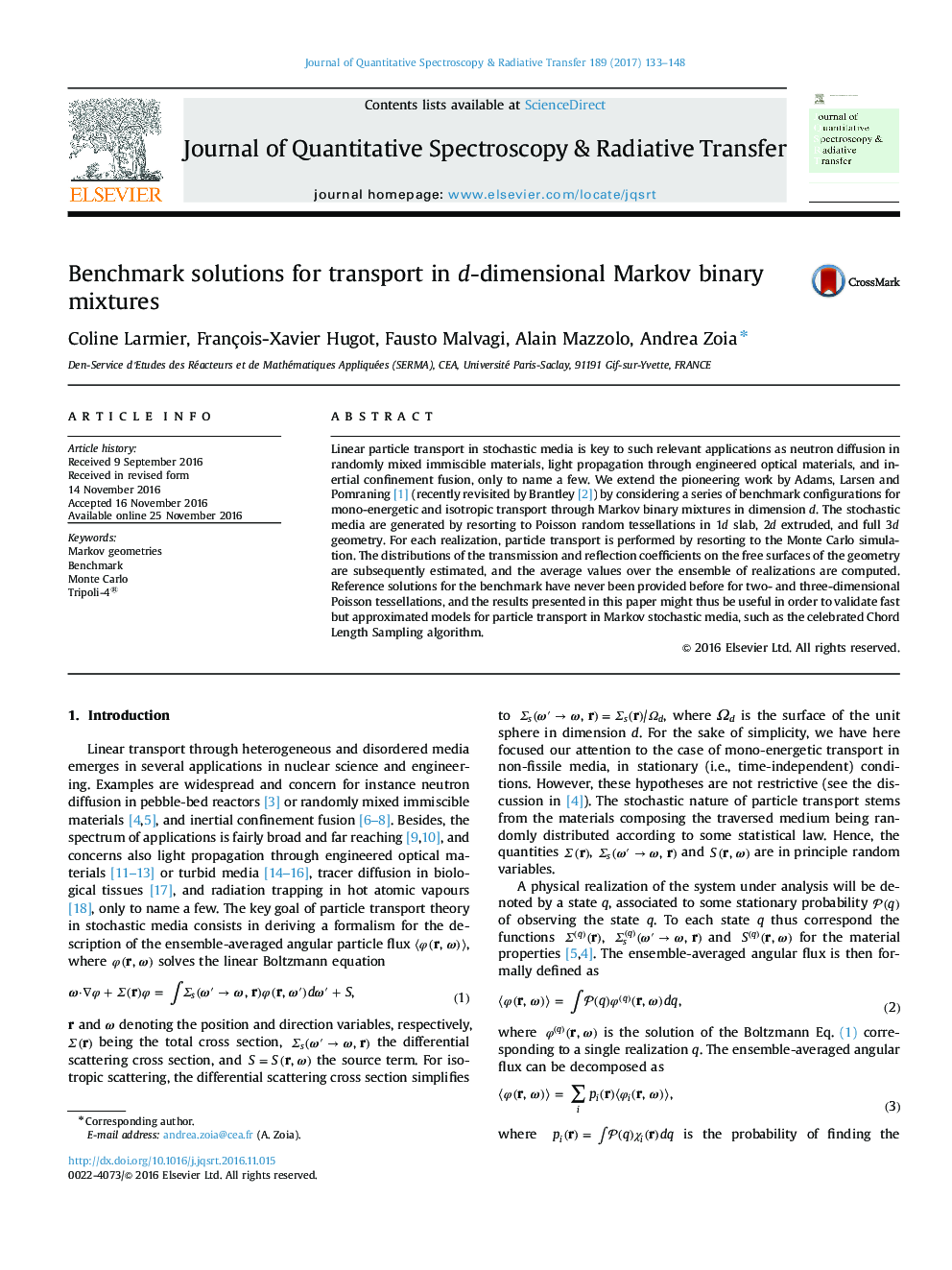| Article ID | Journal | Published Year | Pages | File Type |
|---|---|---|---|---|
| 5427324 | Journal of Quantitative Spectroscopy and Radiative Transfer | 2017 | 16 Pages |
â¢We detail the algorithms to generate Markov geometries (with binary mixing) in dimension d.â¢We compute reference solution for transport in the Adams Larsen and Pomraning benchmark (Markov binary mixtures).â¢Transport in Markov geometries is realized by resorting to the Tripoli-4 Monte Carlo code developed at CEA.â¢We provide the average values for the physical observables (reflection and transmission) and also full distributions and we analyze the impact of dimension.
Linear particle transport in stochastic media is key to such relevant applications as neutron diffusion in randomly mixed immiscible materials, light propagation through engineered optical materials, and inertial confinement fusion, only to name a few. We extend the pioneering work by Adams, Larsen and Pomraning [1] (recently revisited by Brantley [2]) by considering a series of benchmark configurations for mono-energetic and isotropic transport through Markov binary mixtures in dimension d. The stochastic media are generated by resorting to Poisson random tessellations in 1d slab, 2d extruded, and full 3d geometry. For each realization, particle transport is performed by resorting to the Monte Carlo simulation. The distributions of the transmission and reflection coefficients on the free surfaces of the geometry are subsequently estimated, and the average values over the ensemble of realizations are computed. Reference solutions for the benchmark have never been provided before for two- and three-dimensional Poisson tessellations, and the results presented in this paper might thus be useful in order to validate fast but approximated models for particle transport in Markov stochastic media, such as the celebrated Chord Length Sampling algorithm.
